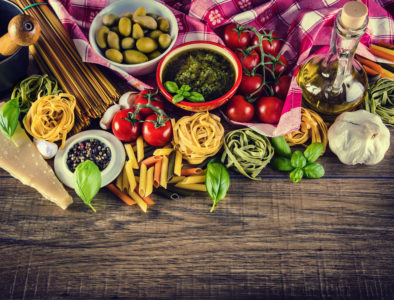 New research published in Scientific Reports found that many patients with chronic pain expressed a desire to have healthier dietary habits, but following through on this desire can be difficult as a result of their pain condition.
New research published in Scientific Reports found that many patients with chronic pain expressed a desire to have healthier dietary habits, but following through on this desire can be difficult as a result of their pain condition.
Researchers took a deep look at some self-reported aspects of diet and nutrition among patients who were suffering from a chronic pain condition. They found that despite pursuing some common suboptimal habits like fast-food consumption and irregular mealtimes, many patients with chronic pain expressed a desire to live healthier. Researchers say the findings can help healthcare professionals and pain care specialists address nutritional challenges faced by patients with long-term pain.
Healthy Eating And Chronic Pain
For the study, researchers polled more than 2,100 individuals with a chronic pain condition about a variety of lifestyle factors and their pain levels. The average patient was just over 46 years old, and more than half were overweight or obese. More than half said they had been in pain for five or more years and reported high levels of pain intensity.
When comparing lifestyle factors, researchers found:
- People who said they desired to eat healthier were more like to report a longer duration of pain.
- A higher pain score was significantly associated with suboptimal eating habits (irregular meal times, unhealthy food choices, etc.).
- People with the worst eating habits were the most likely to express a desire to eat healthier.
Looking at the totality of the study, it’s clear that there is a large portion of chronic pain sufferers who want to eat healthier but struggle to do so. And this is understandable, because chronic pain has a significant impact on a number of different aspects of your life. Chronic pain can be isolating and increase your risk of anxiety and depression, all of which can increase your risk of turning towards nutrient-poor and energy-rich food options. Doctors should be jumping at the opportunity to help patients improve their eating habits, because clearly the underlying motivation is there, they are just struggling with following through on these desires.
This is especially true when you consider just how much of an impact your diet can have on your chronic pain condition. A poor diet can lead to increased inflammation, increased oxidative stress, poorer gut health and alter your metabolism, all of which can make a chronic pain condition and its symptoms worse. Making some small positive changes can slowly help you become healthier and regain more control over your chronic pain condition.
We understand that changing your diet and eating healthier is not easy, especially when you’re battling a chronic pain condition, but that’s where we come in. We know that treating chronic pain needs to be a multi-faceted approach, and nutrition is just one key aspect that we’ll focus on during your journey to better health. Don’t just opt for a doctor who is going to write you a script and send you on your way. Work with a provider who takes a comprehensive approach to pain care, and we think you’ll be pleasantly surprised by the success of your treatment.
For more information, or for help with a chronic pain condition you’re experiencing, reach out to Dr. Cohn’s office today at (952) 738-4580.
